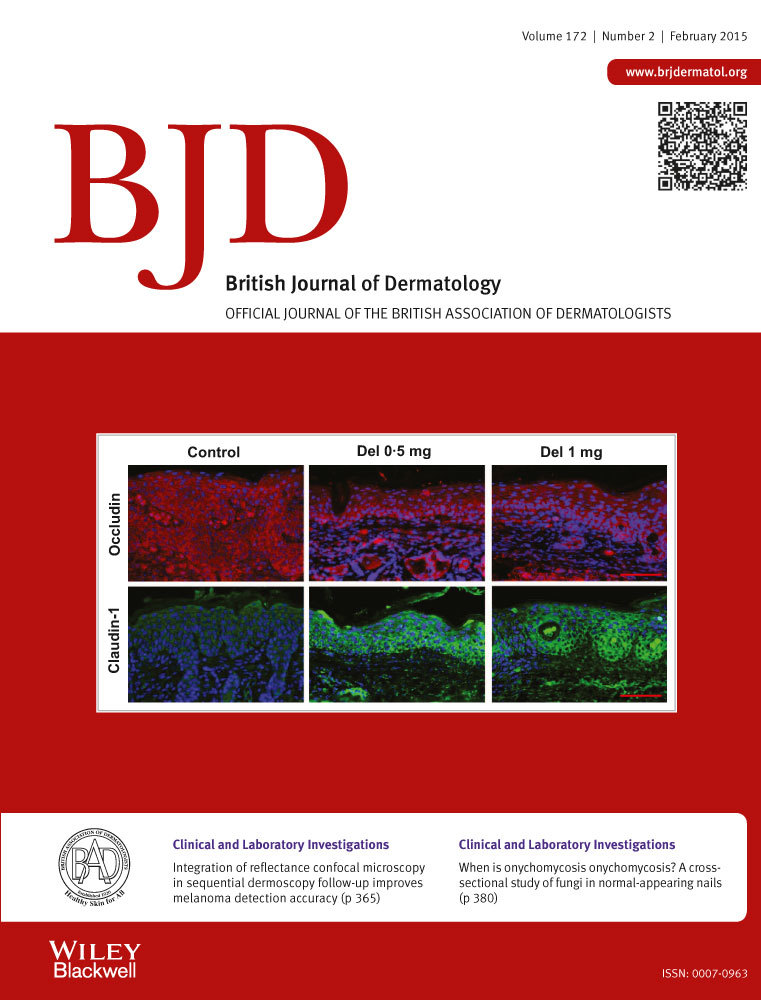Possible patterns of epidermal melanocyte disappearance in nonsegmental vitiligo: a clinicopathological study†
Summary
Background
The depigmentation of vitiligo results in a progressive and chronic melanocyte loss with rare melanocytes occasionally remaining in the epidermis or the hair follicle reservoirs. Destruction by immune infiltrates in close contact with melanocytes within microvesicles and/or detachment of melanocytes followed by their transepidermal elimination should be regarded as possible mechanisms of chronic loss of pigment cells.
Objectives
To assess the frequency of these two histological findings and to establish a direct correlation with clinical features.
Methods
This was a prospective observational study that took place over 1 year. Each patient received a standardized evaluation that included daylight and Wood's lamp examinations, pictures, biopsies performed on the marginal area, and histological and immunohistological studies. A second examination to assess the activity of the lesions was performed 1 year after inclusion in the study. Clinical changes associated with microvesicles were compared with those associated with detached melanocytes from the basal layer.
Results
This study included 50 patients. The histological findings were classified as inflammatory with isolated microvesicles (29 cases), noninflammatory with only detached melanocytes from the basal layer (12 cases) and a combination of coexisting microvesicles and detached melanocytes (six cases). Correlations were obtained between the histological findings and clinical features (aspect and activity of the lesions) and E-cadherin expression.
Conclusions
Our data suggest the existence of two patterns of melanocyte disappearance in nonsegmental vitiligo.




